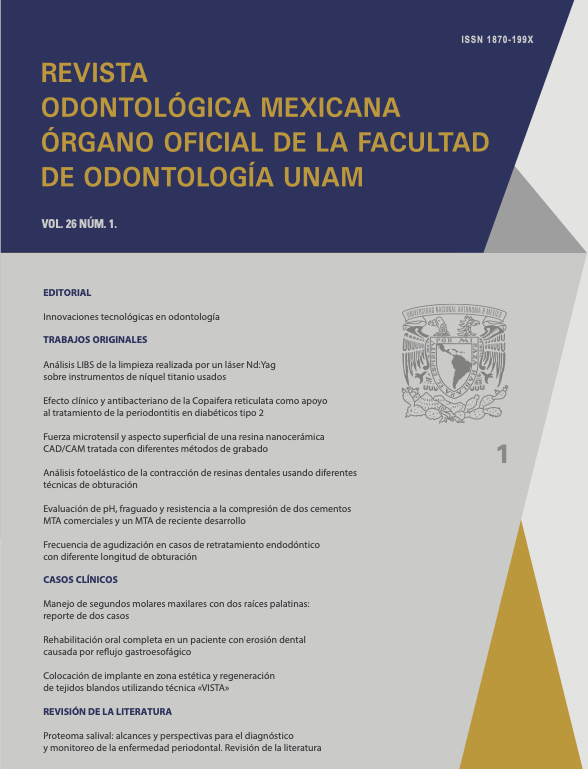Photoelastic shrinkage analysis of dental resins using different filling techniques
Main Article Content
Abstract
Introduction: composite resins are widely used materials in which research continues in pursuit of decreasing shrinkage which is the main cause for their failure. Objective: to compare the contraction by polymerization of three different dental resin placement techniques, using photoelasticity. Material and methods: 33 photo elastic resin plates were made with a circular cavity in the center of 7 mm in diameter. These cavities were filled with resin by the block technique, wall by wall, in oblique increments, and polymerized. One hour later, the samples were placed in the polariscope, photographed, and measured. Statistical analysis was performed using the Kolmogorov- Smirnov, ANOVA, and post hoc Tukey tests, in the SPSS V.22 IBM program. Results: 100% of the samples showed polymerization shrink age. They all expressed isochromes in the photoelastic resin. The block technique showed the lowest shrinkage results, 40% of the samples presented only the first isochromatic band corresponding to the lowest stress value. Conclusion: the use of resins for the block technique reduces stress on the cavity walls.
Article Details
Citas en Dimensions Service

Revista Odontológica Mexicana por Universidad Nacional Autónoma de México se distribuye bajo una Licencia Creative Commons Atribución-NoComercial-SinDerivar 4.0 Internacional.
Basada en una obra en http://revistas.unam.mx/index.php/rom.
